Are you planning a japan itinerary 14 days that captures the country’s essence? Look no further. Japan blends ancient temples, futuristic neon, scenic countryside, and exquisite cuisine. In just two weeks, you can see towering skyscrapers in Tokyo, sip tea in Kyoto’s tranquil gardens, and gaze up at Mount Fuji’s snow-capped peak. This itinerary highlights must-visit places, insider tips, and essential cultural experiences. If you love tradition, modern tech, or nature’s beauty, Japan promises memories that linger well beyond 2025.
Days 1–3: Discover Tokyo – The Heart of Modern Japan
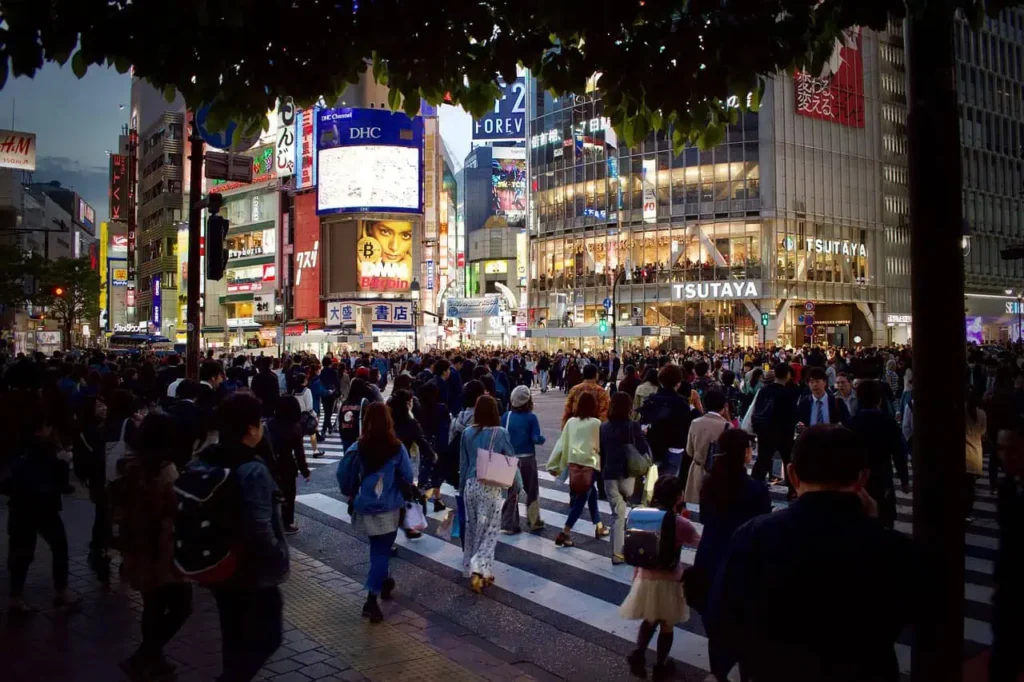
Explore Iconic Tokyo Landmarks
Kick off your japan itinerary 14 days in Tokyo, the sprawling capital that sets trends for the whole nation. Dive into Shibuya Crossing, known as the world’s busiest pedestrian intersection. Grab a vantage point above the crossing to watch the neon chaos. Then head to the Imperial Palace East Gardens (free entry, closed Mondays and Fridays), where you can stroll amid quiet landscaping. For a lofty perspective, visit Tokyo Skytree (tickets around $20–$30) to see the metropolis stretched under you.
- Don’t Miss
- Meiji Shrine in Shibuya, a tranquil Shinto haven among towering cedar trees
- Senso-ji Temple in Asakusa, featuring a colorful Nakamise shopping street
- Budget Tip
- Many observation decks, like Tokyo Metropolitan Government Building in Shinjuku, are free. Perfect for skyline photos
Discover some fascinating trivia about Japan to enrich your cultural knowledge as you plan your 14-day adventure.
Dive Into Tokyo’s Neighborhoods
Tokyo’s neighborhoods each boast distinct vibes. Harajuku calls fashion-forward youths with quirky boutiques and crepe stands (around $3–$5). Akihabara is a gamer’s paradise, stuffed with anime shops and arcades. Meanwhile, Ginza exudes luxury, lined with top designer brands and sleek department stores.
- Must-See Spots
- Takeshita Street in Harajuku for eccentric outfits and kawaii sweets
- Electronics superstores in Akihabara (some open until late evening)
- Dining Note
- High-end sushi bars pop up in Ginza, but lunch sets cost less ($30–$50) than dinner
- Tip
- If you’re short on time, pick your favorite subculture hub and roam for half a day
Need inspiration for activities? Check out these exciting things to do in Japan that perfectly complement your two-week itinerary.
Indulge in Tokyo’s Food Scene
Food enthusiasts rejoice in Tokyo’s rich dining. Tsukiji Outer Market brims with sushi counters (about $5–$15 for a few pieces) and fruit stands. For ramen, join lines in Shinjuku or Shibuya, slurping up a $10–$12 bowl. At night, Golden Gai’s alley bars host friendly izakayas (Japanese pubs). Try yakitori (grilled chicken skewers $2–$3 each) while mingling with locals.
- Local Favorites
- Ichiran Ramen for a private booth tasting experience
- Kaiten (conveyor belt) sushi spots for quick, budget-friendly meals
- Budget Tip
- Department store basements (depachika) sell bento boxes at discounted prices nearing closing time
Insider Tips for Tokyo Travel
To best explore Tokyo’s labyrinth, rely on its clean, punctual metro system (day passes from $6–$12). Shinjuku, Shibuya, and Asakusa remain popular bases for easy sightseeing. Each area has varied lodging, from capsule hotels ($30–$50) to five-star towers ( $150–$300). If you arrive in spring, see cherry blossoms in Ueno Park or near Sumida River.
- Commuter Tip
- Invest in a Suica or Pasmo card for contactless fare on trains and vending machines
- Time
- Spend at least three full days here to catch both modern glitz and historical sites
Before you go, make sure to understand what not to do in Japan for respectful travel and ensure a smooth and courteous journey.
Days 4–5: Hakone and Mount Fuji – Nature and Hot Springs
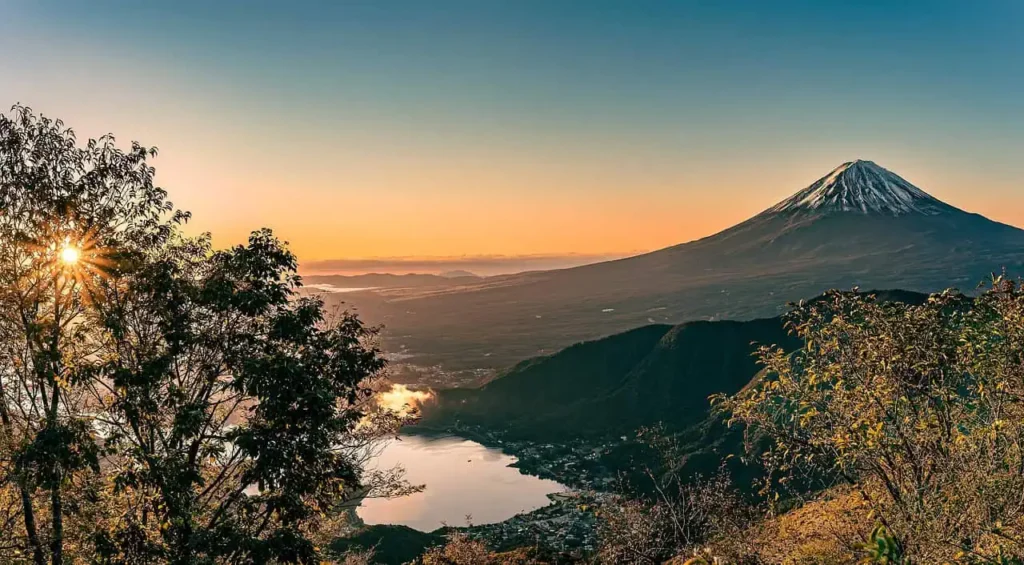
Admire the Beauty of Mount Fuji
Mount Fuji stands as Japan’s sacred icon. On clear days, the symmetrical volcano reveals itself from Lake Kawaguchi. Stop at Chureito Pagoda (a steep 400-step climb) for postcard-worthy photos of red pagoda, Fuji, and seasonal cherry blossoms. You could also try a short hike along the trails near Fuji Subaru Line 5th Station, though always confirm weather conditions.
- Viewpoints
- Lake Kawaguchiko’s shoreline or vantage from hotels with unobstructed panoramas
- Travel
- Buses run from Shinjuku to Kawaguchiko (about $20 one-way). Book seats online in peak times
- Seasons
- Winter often yields crisp views but can be cold and icy. Summer sees more clouds
Relax in Hakone’s Onsens
Hakone nestles in a geothermal region dotted with onsens (hot springs). Enjoy a night in a ryokan (traditional inn) for a restful soak, typically $150–$300 per person with meals. Some ryokans have private open-air baths facing mountain vistas. The city’s sulfur vents release a faint smell, a small trade-off for the healing waters.
- What to Do
- Try black eggs (kuro-tamago) boiled in sulfur hot springs at Owakudani. Legend says eating one extends life by seven years
- Visit the Hakone Open-Air Museum, blending modern sculptures with nature (about $16)
- Etiquette
- Nudity is normal in Japanese onsens. Rinse thoroughly before entering the shared bath
While exploring Asia, don’t miss these top reasons to visit bustling Hong Kong, a city filled with vibrant energy and attractions.
Scenic Travel via the Hakone Loop
The Hakone Free Pass ( $50–$60 for two days) covers a circuit of trains, cable cars, ropeways, and a pirate-themed boat across Lake Ashi. You can admire Fuji’s silhouette on clear days from the ropeway or the lake. Each mode of transport offers unique vantage points, from highland forests to crater valleys.
- Stops
- Gora for a quaint mountain town atmosphere
- Moto-Hakone for lakeside shrines
- Tips
- Start early. The loop takes a full day if you stop at viewpoints or museums
Days 6–9: Kyoto and Nara – The Cultural Core of Japan
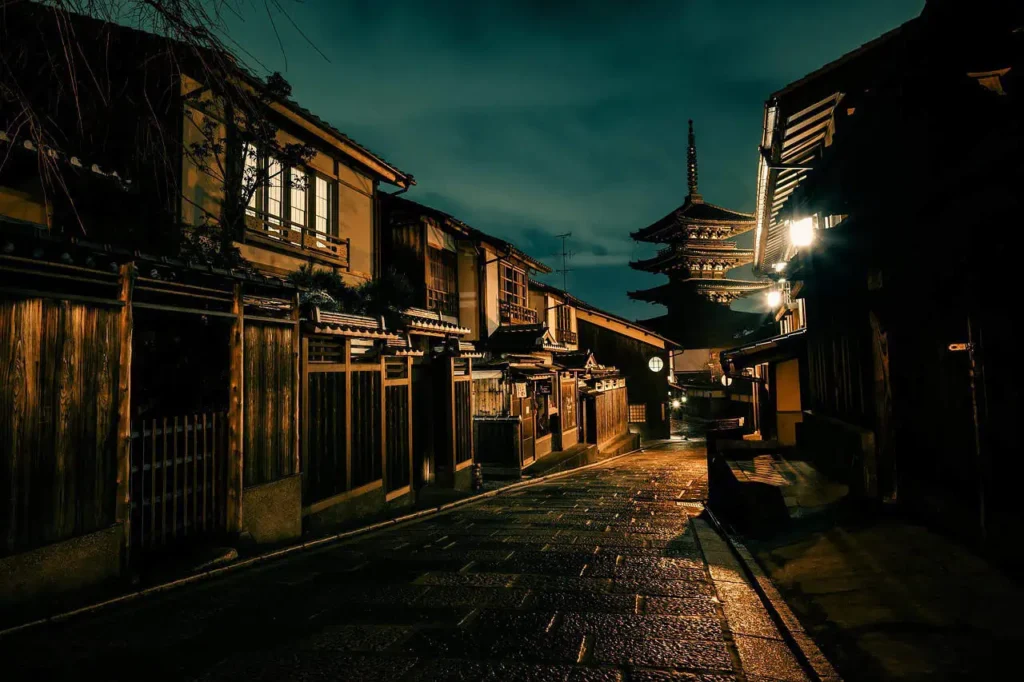
Uncover Kyoto’s Historic Gems
Kyoto breathes history, once Japan’s imperial capital for over a thousand years. Start at Fushimi Inari Taisha, famous for thousands of vermillion torii gates that wind up a wooded mountain. Arashiyama’s bamboo grove invites a serene walk among towering stalks. Don’t miss Kinkaku-ji (Golden Pavilion, entry about $4) reflecting in its pond, or meander Gion’s alleyways, hoping for a glimpse of a geisha.
- Essential Sights
- Kiyomizu-dera Temple, perched above Kyoto with panoramic city vistas
- Nishiki Market for local snacks—grilled seafood or mochi ( $2–$5 each)
- Cultural Tip
- Respect temple customs: remove shoes where indicated, avoid loud voices
Take a Day Trip to Nara
Nara, an easy 30- to 45-minute train ride from Kyoto, brims with heritage. Nara Park’s free-roaming deer bow for treats ($1–$2 for deer crackers). Todai-ji Temple houses a colossal bronze Buddha, mesmerizing visitors with its scale. Meanwhile, Kasuga Taisha shrine hides among cedar groves, lined with stone lanterns.
- Budget
- The park is free, though Todai-ji entry is around $6
- Safety
- Deer can nibble on clothes or maps. Gently wave them off if they get too pushy
- Timing
- Half-day suits main spots, but a full day allows deeper exploration
Looking for another destination? Consider this amazing week-long trip to Thailand to enjoy serene beaches and cultural landmarks.
Enjoy Traditional Experiences
Kyoto’s cultural depth entices travelers with tea ceremonies, kimono rentals ( $30–$50 daily), or calligraphy workshops. In Gion, the possibility of glimpsing a maiko (apprentice geisha) walking to an evening engagement ignites excitement. Book a tea ceremony ( $20–$40) for a refined ritual of matcha, sweets, and elegance.
- Recommendation
- Attend a short maiko performance or book a private dinner for an intimate cultural exchange ( pricier, $100+)
- Relaxation
- Stroll Philosopher’s Path near Eikan-do Temple during cherry blossom season
- Dining
- Try kaiseki (multi-course haute cuisine). Cheaper set lunches run $30–$50
Days 10–12: Osaka and Hiroshima – Urban Energy and Historical Reflection
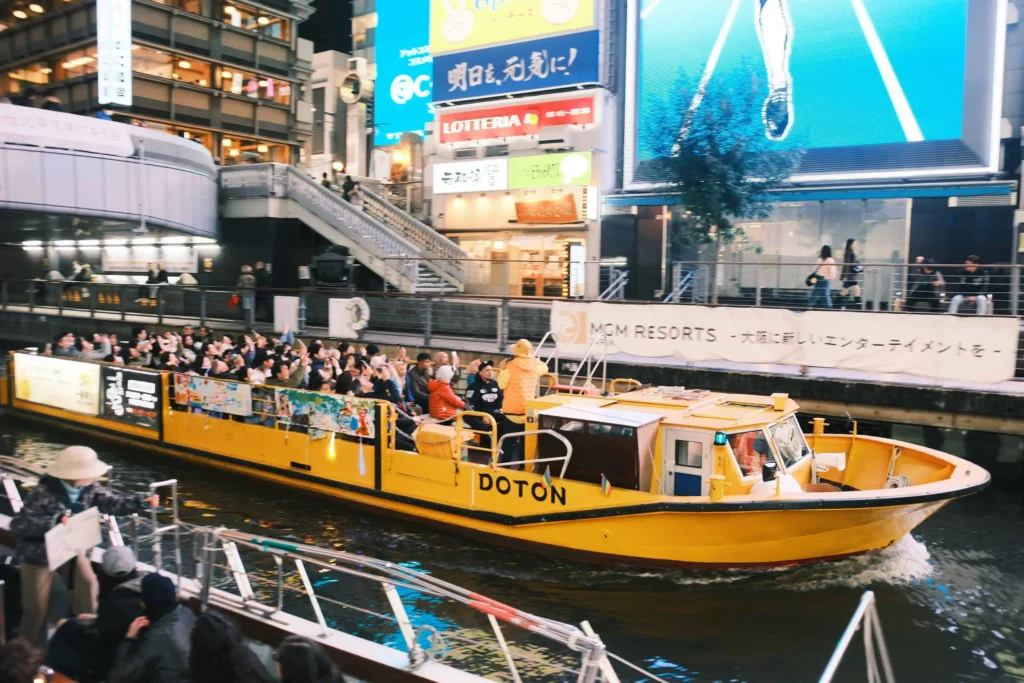
Dive Into Osaka’s Vibrant Scene
Osaka exudes bright lights, energetic crowds, and amazing street food. Begin at Osaka Castle ( about $5 entry) for feudal-era grandeur. The Umeda Sky Building’s Floating Garden Observatory grants sweeping city views ( around $15). By night, Dotonbori glows with giant neon signs and mechanical crabs. Sample takoyaki ( $3–$5 for six pieces) or okonomiyaki ( $7–$10) from street stalls.
- Nightlife
- Namba area hustles with bars, karaoke spots, and arcades
- Shopping
- Shinsaibashi-suji for mid-range to high-end boutiques
- Transit
- The Osaka Amazing Pass ( $25–$35) can cut costs if you’re hitting multiple attractions
Learn History in Hiroshima
Hiroshima’s Peace Memorial Park underscores the city’s tragic WWII past yet offers a moving tribute to resilience. The Peace Memorial Museum ( $2–$3) displays artifacts of the 1945 atomic bombing. Outside, paper cranes represent global prayers for peace. Don’t miss the A-Bomb Dome, a UNESCO site standing as a testament to the bomb’s destructive force.
- Miyajima Island
- Take a ferry ( $2–$3 each way) to see the floating torii gate of Itsukushima Shrine
- Deer roam here too, though less numerous than Nara
- Local Food
- Hiroshima-style okonomiyaki layers noodles, cabbage, and egg in a savory pancake
- Emotion
- Many visitors find Hiroshima’s narrative deeply moving
Pro Travel Tips
Use a Japan Rail Pass ( $270–$350 for a 7-day pass, $430–$550 for 14 days) to zip between Osaka and Hiroshima via shinkansen. If you have leftover time, pop over to Himeji Castle in transit. Accommodations in Osaka’s Namba or Hiroshima’s city center keep you near restaurants and shopping.
- Packing
- Travel light if you’re moving cities often. Coin lockers at stations ( about $5–$7 daily) help store big bags
- Timing
- 1–2 days in Osaka for food and city vibes, plus 1 day in Hiroshima or 2 if you want to add Miyajima
Dive into the incredible artistry and spirituality of Thailand by visiting the White Temple, a breathtaking landmark that rivals Japan’s architectural wonders.
Days 13–14: End Your Journey in Fukuoka or Return to Tokyo

Explore Fukuoka’s Highlights
Fukuoka, on Kyushu Island, presents a modern coastal vibe with fewer tourists. Fukuoka Tower ( $8–$10) offers panoramic bay views, and Ohori Park invites leisurely lake strolls. Ramen lovers must try Hakata ramen (about $6–$9 a bowl), known for its creamy pork bone broth. Yatai (street food stalls) line the riverside, serving yakitori or gyoza in a cozy setting.
- Why Fukuoka?
- A quieter city experience, warm southern climate, friendly locals
- Transportation
- Shinkansen from Hiroshima takes about an hour
- Alternative
- If you prefer more time in Tokyo, skip Fukuoka and add those days back in the capital
Alternative: Final Days in Tokyo
If you missed any Tokyo must-sees, now’s your chance. Revisit Tsukiji Outer Market or explore new spots like Odaiba’s futuristic waterfront. Shop for souvenirs in Shibuya or find anime collectibles in Nakano Broadway. End the night at a karaoke booth ( $20–$40 per hour, depending on group size) or a final izakaya feast.
- Suggestions
- Tokyo Disney Resort for families or Ghibli Museum for anime fans
- Pack Up
- Tokyo’s Narita or Haneda airports handle returns to the U.S. Check train schedules to plan your final departure
- Transit
- If your JR Pass is active, use the Narita Express or local lines to get to the airport
Practical Tips for Wrapping Up
Before leaving Japan, confirm you’re not overweight on luggage—some trains and flights have strict limits. A well-organized 14-day trip means you’ll cover half the country, so budget a bit for souvenirs. Rethink your spending if you see final bargains on matcha kits or sumo-themed T-shirts.
- Time-Saver
- Pre-purchase train seat reservations during low foot-traffic times
- Reminder
- Return pocket Wi-Fi or SIM card if rented. Bag any special trash like used IC cards
FAQ Section: Planning Your Japan Itinerary for 14 Days
Is two weeks enough to explore Japan?
Yes, a 14-day trip allows a balanced taste of major cities—Tokyo, Kyoto, Osaka—plus natural escapes like Hakone or Hiroshima’s scenic sites. You won’t see everything, but it’s enough to sample diverse regions and experiences.
How much should I budget for a two-week trip to Japan?
Costs vary by travel style. A mid-range traveler might spend $150–$200 daily, covering lodging, transport, and moderate dining. That yields roughly $2,500–$3,000 for two weeks. If you choose fancy ryokans, add extras. A Japan Rail Pass also influences your final total.
What’s the best time of year to visit Japan?
Spring (March–May) dazzles with cherry blossoms, though it’s peak tourist season. Autumn (September–November) brings crisp air and fiery foliage. Winter can be quieter, with potential snow in northern areas or around Fuji. Summer is hot, but festivals abound, balancing the humidity.
Can I do this itinerary with kids?
Absolutely! Children enjoy Tokyo Disneyland or Universal Studios Japan (in Osaka). Many shrines and museums have interactive sections or easy stroller paths. Consider leaving some buffer days for rest or flexible scheduling.
Do I need a Japan Rail Pass for this itinerary?
It’s highly recommended. The pass often pays off if you’re crossing multiple regions. The 14-day pass ( around $430–$550) streamlines bullet train rides between Tokyo, Kyoto, Osaka, Hiroshima, and other stops. Without it, individual shinkansen tickets add up fast.
Conclusion
A well-crafted japan itinerary 14 days can whisk you from Tokyo’s neon wonderland to Kyoto’s serene temples, through Hakone’s hot springs, and on to Hiroshima’s poignant memorials. Meanwhile, the gastronomic delights—ramen, sushi, wagyu—elevate every meal into a cultural experience. Whether you choose Fukuoka’s relaxed pace or circle back to Tokyo’s urban energy, these two weeks promise an unforgettable glimpse into Japan’s timeless traditions and forward-thinking modernity.
Pack light, secure your JR Pass, and brace for sensory delights in every region. You’ll watch bullet trains zip past iconic Mt. Fuji, slip off shoes entering tatami-floored inns, and perhaps dance with hyperactive lights in Shibuya. By journey’s end, you’ll understand why Japan leaves travelers enthralled, planning their next trip before they’ve even flown home. Embrace the delicate balance of old and new, and let Japan’s unique spirit spark endless inspiration.
For official tourism details, festival dates, or pass info, you can visit the official Japan National Tourism Organization website directly. It offers real-time travel updates, local event highlights, and additional city guides to enhance your 14-day journey.

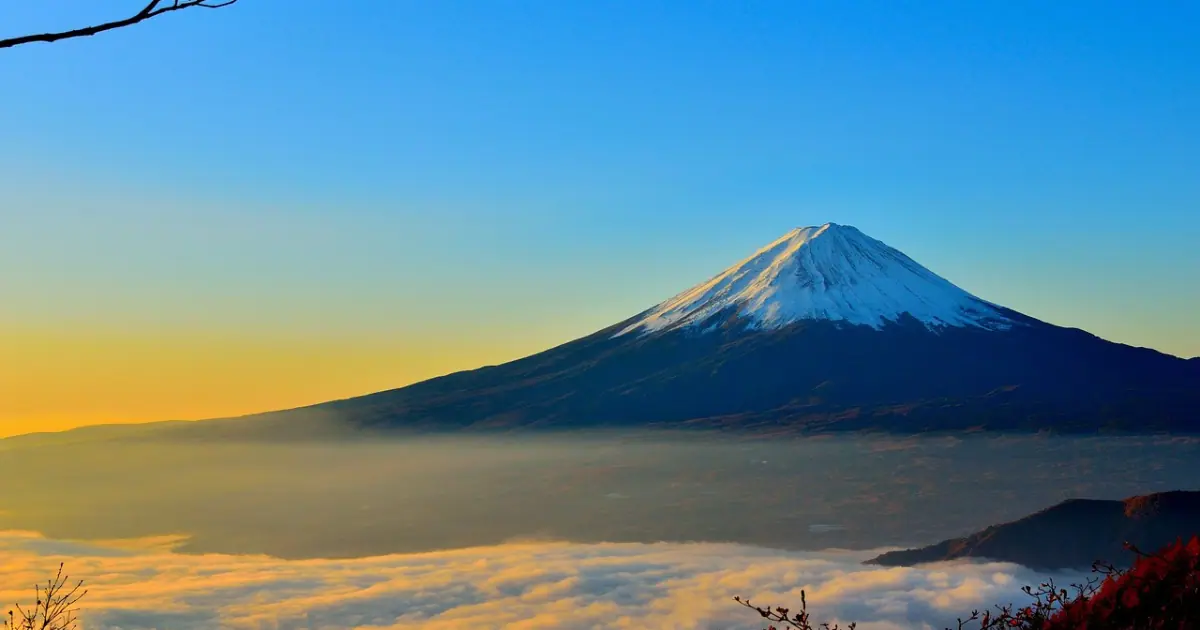
1 thought on “Japan in Two Weeks: A Perfect 14-Day Itinerary for 2025”